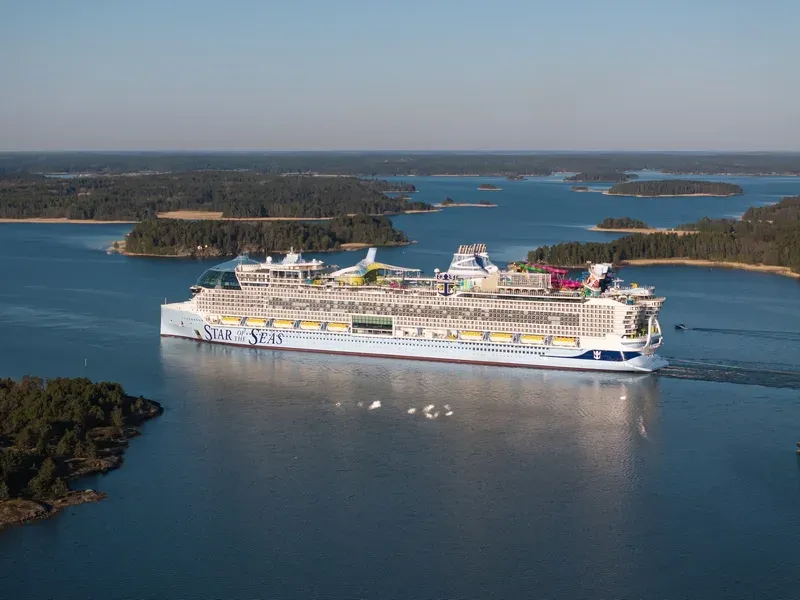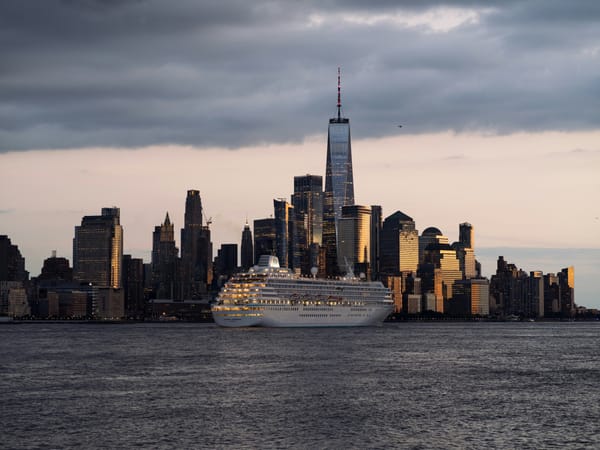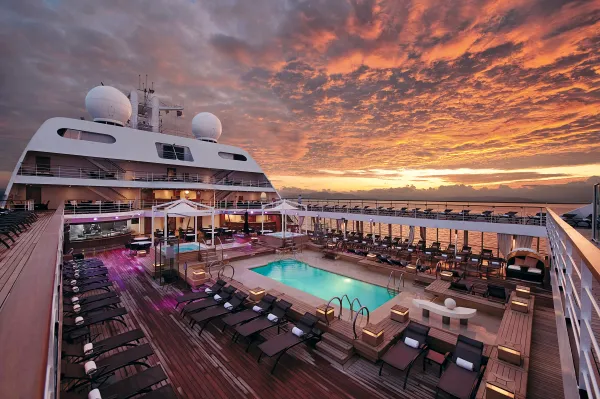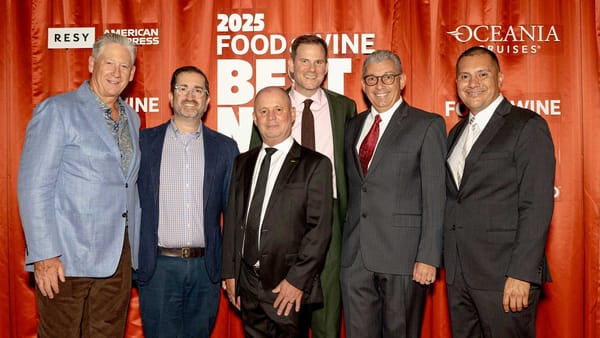Star of the Seas Nears Debut as Royal Caribbean Focuses on LNG, New Ships
Star of the Seas advances Royal Caribbean’s expansion of LNG-powered megaships, with new itineraries and evolving strategies that include exploring future smaller vessel designs.

Royal Caribbean International is moving full steam ahead with its next-generation fleet, highlighted by the upcoming Star of the Seas. With its recent transit to open waters for sea trials, the second ship in the Icon-class series showcases the line’s emphasis on LNG propulsion, innovative amenities, and a broadening array of itineraries. At the same time, executives are exploring possibilities for smaller vessels to complement Royal Caribbean’s iconic megaships.
Star of the Seas Approaches Launch
Built at the Meyer Turku shipyard in Finland, Star of the Seas is set to debut in August 2025. Recent photographs released by the shipyard show the vessel completing critical sea trials less than 100 days before its scheduled completion. During these trials, technical teams assess onboard systems and finalize performance metrics, marking one of the final construction milestones.
Upon entering service, Star of the Seas will operate seven-night Caribbean sailings out of Port Canaveral. Its itineraries include stops at popular regions in the Western and Eastern Caribbean, with a featured call at Perfect Day at CocoCay, Royal Caribbean’s private island in the Bahamas.
Icon-Class Evolution and Future Deliveries
The Icon-class began with the Icon of the Seas in January 2024, currently recognized as the world’s largest cruise ship at 248,663 gross tons. Following Star of the Seas, Royal Caribbean has confirmed Legend of the Seas for 2026 and another Icon-class vessel slated for 2027. In parallel, the company also plans to introduce an additional Oasis-class ship in 2028, reflecting a multi-year expansion strategy across multiple ship categories.
Along with unveiling larger ships, the cruise line is keeping pace with passenger demand by considering more intimate vessel options. CEO Jason Liberty has indicated the company is exploring new classes of smaller ships, though specific details remain under wraps.
Smaller Ship Potential
Royal Caribbean’s existing Radiance and Vision classes, home to vessels like the Jewel of the Seas (2004) and Grandeur of the Seas (1996), prove that smaller ships can remain relevant. These ships access ports unreachable by larger vessels, potentially appealing to travelers seeking distinctive, less crowded cruises. Executives suggest that future smaller-class designs could further diversify the brand’s offerings, balancing grand Icon-class megaships with more personal experiences.
Economic and Environmental Factors
LNG-powered ships such as Star of the Seas reflect a broader shift toward cleaner marine fuels. By minimizing emissions compared to traditional diesel-based propulsion, Royal Caribbean aims to reduce its environmental footprint while delivering large-scale hospitality and entertainment at sea. “Star of the Seas embodies our commitment to innovative and sustainable cruising,” said Vicki Freed, Senior Vice President of Sales and Trade Support. “We look forward to welcoming guests aboard next summer for a new level of onboard experiences.”
Beyond environmental considerations, the arrival of new vessels in the Caribbean, Mediterranean, and other regions supports local economies. By expanding fleets and itineraries, the cruise line serves growing demand while boosting tourism in key ports worldwide.
Frequently Asked Questions (FAQs)
Why is Star of the Seas significant for Royal Caribbean?
As the second Icon-class vessel, Star of the Seas signifies Royal Caribbean’s ongoing commitment to innovative designs and lower-emission LNG propulsion. It builds upon the groundbreaking features introduced on the Icon of the Seas.
Why is Royal Caribbean focusing on LNG-powered ships?
LNG is considered a cleaner-burning fuel alternative that produces fewer emissions than traditional marine fuels. Incorporating LNG propulsion aligns with the cruise line’s broader sustainability strategies aimed at reducing its environmental impact.
Which ships are part of Royal Caribbean’s Icon-class fleet?
The Icon-class currently includes the Icon of the Seas (2024), the Star of the Seas (2025), and the upcoming Legend of the Seas (2026). Another Icon-class vessel is on order for 2027, followed by a new Oasis-class ship in 2028.
Will Royal Caribbean introduce new smaller ships?
While no formal orders have been announced, company leaders have indicated they are exploring designs for smaller vessels. Such ships would offer access to ports that larger vessels cannot visit and may appeal to travelers seeking more intimate cruise experiences.
Where will Star of the Seas sail after its debut?
The ship is scheduled to begin its maiden voyage from Port Canaveral in August 2025. It will offer seven-night planned itineraries across the Western and Eastern Caribbean, including a call at Perfect Day at CocoCay.
With Star of the Seas entering the final stages of construction and further Icon-class ships in the pipeline, Royal Caribbean continues to evolve its global fleet. Whether through LNG-powered megaships or prospective smaller vessels, the company’s development strategies show no signs of slowing, keeping the cruise industry’s focus squarely on sustainability and innovation.




